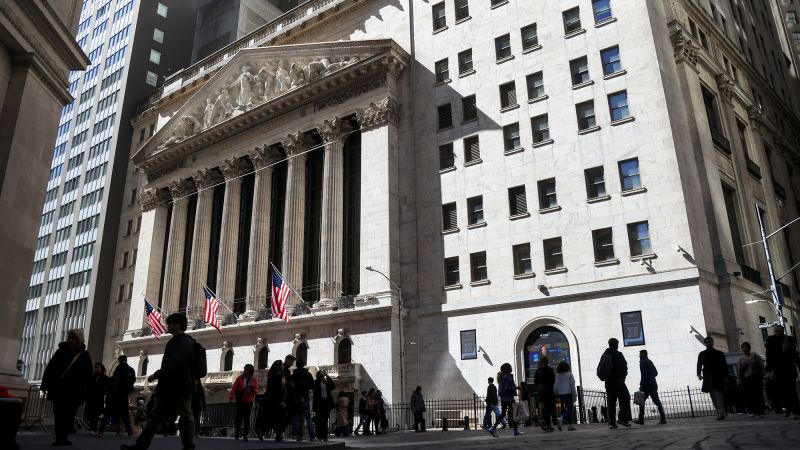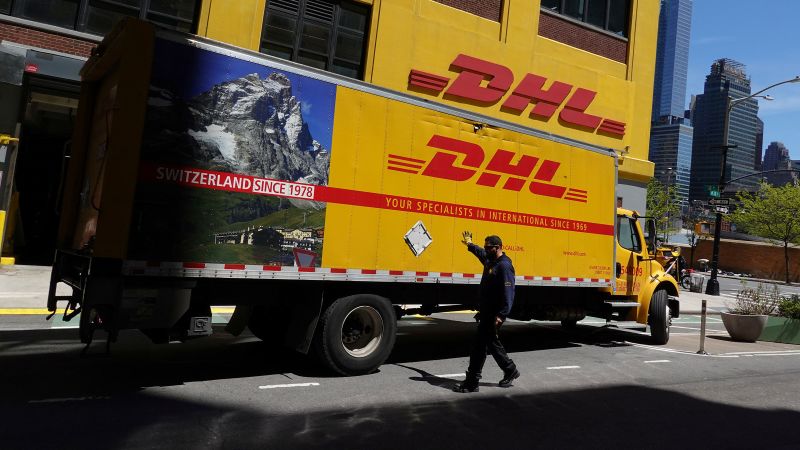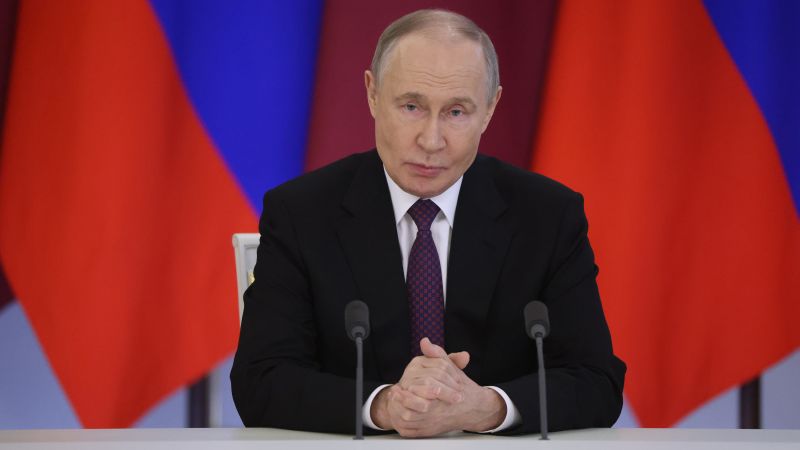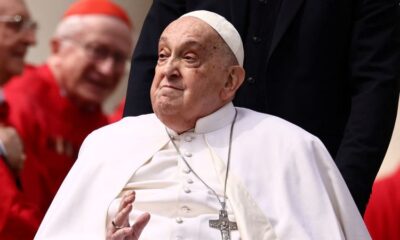New York
CNN
—
The US stock market has been the gold standard for decades. But investors around the globe are growing increasingly nervous about the fallout from President Donald Trump’s economic agenda. That has sent traders in search of stocks in Europe and Asia.
Wall Street has seen the largest drop in allocation to US stocks on record since data collection began in 1999, according to a Bank of America survey. Meanwhile, the survey showed the largest increase in allocation to European stocks since 2021.
That’s in part because investors think US exceptionalism may have peaked, analysts at Bank of America wrote.
After the benchmark S&P 500 soared over the past two years, some investors were already uncertain about prospects for another stand-out year. But now, Trump’s approach to trade and foreign policy is contributing to a broad shift in investors’ perception of the stability of US markets.
“There seems to be a sea change in overall investor sentiment,” said David Russell, global head of market strategy at TradeStation.
The Dow on Friday edged higher by 32 points, or 0.08%. The broader S&P 500 gained 0.08% and the Nasdaq Composite rose 0.52%. The end-of-day rally helped the S&P 500 and Nasdaq snap a four-week losing streak.
The S&P 500 is down about 4% this year, lagging indexes around the globe that have all gained, including in China, Europe and Mexico.
Markets crave certainty and stability, and the US outlook is increasingly at odds with that picture, said Peter Ricchiuti, senior professor of finance at Tulane University’s Freeman School of Business.
“The US has been [the place] everybody wanted to put money into,” he said. “And now it’s really upsetting the whole world in terms of clarity.”
Recent data highlights that divergence: An index measuring US economic policy uncertainty by month spiked in March to its highest level since the Covid-19 pandemic. The Federal Reserve on Wednesday said in a statement that “uncertainty around the economic outlook has increased.”
Ricchiuti said investors might be concerned about the impact of Trump’s policies toward tariffs and immigration on US economic growth.
Major US companies are also signaling turmoil ahead. FedEx (FDX) slid 6.4% Friday after the parcel company slashed its guidance and lowered its forecast for profits this year. “Our revised earnings outlook reflects continued weakness and uncertainty in the U.S. industrial economy,” said John Dietrich, chief financial officer at FedEx Corporation, in a statement.
“While we expected President Trump to make tariffs a key pillar of his policy agenda, the sheer size of the tariffs, coupled with a haphazard implementation plan, has created market turmoil and made it difficult for companies to plan for the future,” analysts at Baird said in a Thursday note.
While investors are grappling with unease in the outlook for the US economy, the picture in Europe has emerged as relatively stable from an investment perspective. The Trump administration’s shift on foreign policy toward Ukraine has been a catalyst for Europe to focus on defense spending, boosting European stocks.
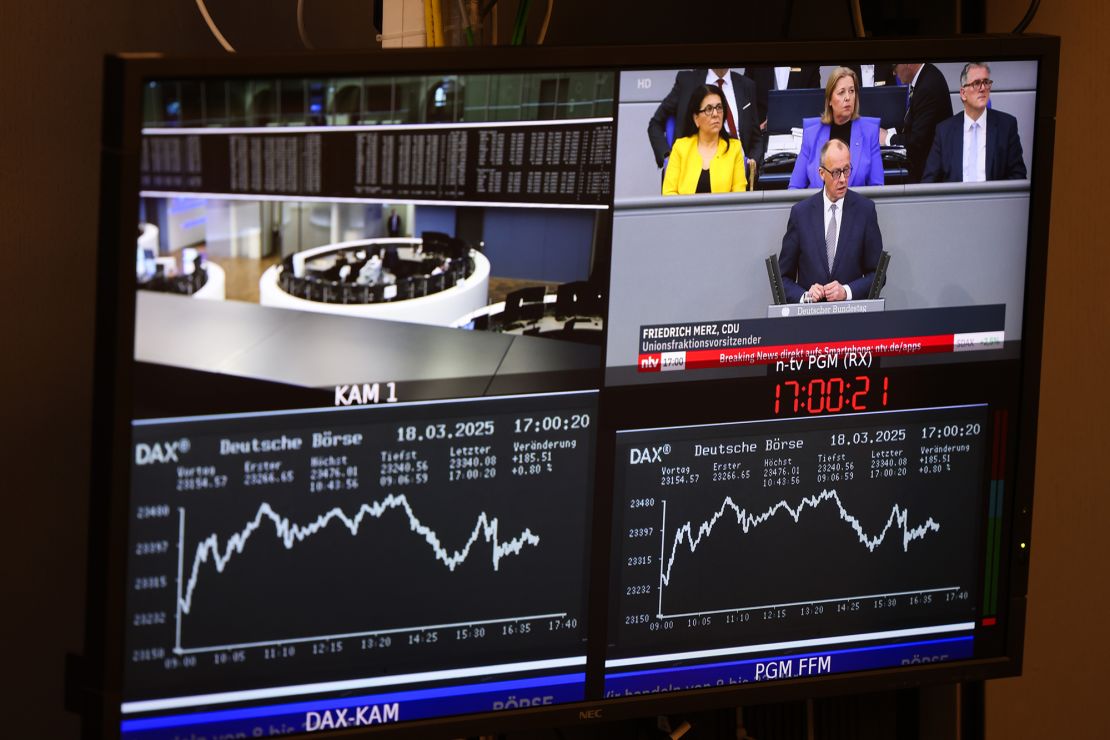
In Germany, political change has propelled hopes for an economic transformation. Chancellor-in-waiting Friedrich Merz was successful in pushing through a historic plan for increased defense spending, providing a boost to forecasts for economic growth.
“While this is being done in reaction to US policies, it offers compelling economic benefits for Germany,” said Kristina Hooper, chief investment strategist at Invesco, in a recent note.
Germany’s DAX index has soared 15% this year.
“The question is whether the Trump policy that’s slightly more isolationist actually unlocks kind of a new regime for investing internationally,” said Ross Mayfield, an investment strategist at Baird.
The S&P 500 and the Nasdaq both fell into correction territory this month, down more than 10% from their record highs. The S&P has pulled back from correction territory but is down 7.8% from its record high.
While Trump’s tariffs have rattled markets, other factors are underpinning the poor performance.
The tech stocks that propelled the US market in 2024 are sputtering to start this year.
Every “Magnificent Seven” tech stock except Meta (META) is in the red so far this year. Alphabet (GOOG), Amazon (AMZN), Apple (AAPL), Nvidia (NVDA) and Tesla (TSLA) are all down more than 10% this year. Microsoft (MSFT) is down 7%.

In January, DeepSeek’s AI model caught investors and Silicon Valley off guard and sent shockwaves through the US market, raising questions as to whether the AI boom was worth the money being poured into it. Chinese electric vehicle maker BYD has been trying to cement its place as a staunch competitor to Elon Musk’s Tesla, whose share price has tumbled almost 40% this year.
The Chinese government on March 16 also passed a “special action plan” to stimulate consumer spending in the economy in response to Trump’s tariffs. Stocks in China have surged this year. Hong Kong’s Hang Seng index has gained 18%.
Stock performance is not reflective of the value of an economy on an absolute level, said TradeStation’s Russell. The US economy is still much stronger than Europe’s and wholly more reliable than China’s, and it’s long been foolish to bet against America. Yet the first few weeks of Trump’s second term have been a far cry from the pro-business boom investors expected when he was reelected in November.

